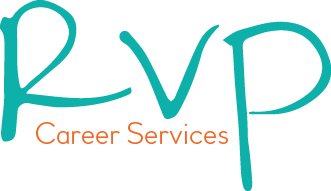How to Approach the Modern Executive Job Search
/Photo by Hunters Race on Unsplash
Millennials are getting a lot of attention because they’re considered “job hoppers,” only staying in a position for a year or two. And while it’s true that more seasoned workers generally stay at jobs longer than younger ones, these days, few workers retire from the same job they’ve held their entire career.
In fact, research from the United States Department of Labor’s Current Population Survey found that workers have been with their current employer for a median of 4.6 years.
When you haven’t looked for a job in a while, a job search—especially an executive-level job search—can be intimidating. One of the biggest things to consider is how much the ways to go about finding a job have changed since the last time you looked for a new position.
Regardless of whether you’ve been an executive at several companies or have worked your way up the ranks at the same company, how employees find new jobs is an ever-changing environment.
How Executive Job Search Has Changed
Think about how much your life has changed in the past few years. Remember what your life was like the last time you searched for a job. If it was 15 years ago, flip phones were the rage. The iPhone wasn’t even introduced until June 2007. Google started working on the self-driving car in 2009. If you think back to how much has changed in your life since the last time you looked for a new job, it’s no wonder that the job search has changed as well.
Whatever your reason for making a change now, you will find lots of conflicting advice online about résumés and the job search. Some articles will tell you that the résumé is dead and Google or LinkedIn are the “new résumé.” That’s not entirely true. The vast majority of recruiters and hiring managers still rely on résumés in the hiring process.
And from your—the executive jobseeker’s perspective—the work you do with a professional executive résumé writer is instrumental in identifying the specific value you have to offer to a prospective employer. This valuable content will also populate your LinkedIn profile. So even in the changing digital landscape, you will need a résumé and a LinkedIn profile or some other type of online presence.
Speaking of LinkedIn, it can be an important job search tool, helping you be found online by recruiters and hiring managers looking for someone with your specific skills and experience. A “complete” LinkedIn profile — that includes a current photo, targeted Headline, succinct Profile, and full content in the Experience, Education, and Skills sections — is important. But it still doesn’t replace the résumé, especially in the executive realm.
The Modern Executive Résumé
While the need for an executive résumé hasn’t changed, the résumés themselves have changed. The old “objective” statement at the top of the résumé has been replaced with an “executive summary” or “qualifications profile” that immediately showcases who you are and what you have to offer a prospective employer. Objective statements were about what you wanted; the new summary is about what you can do for the employer.
The days of the “generic” résumé are also gone. Instead, your résumé must be specifically targeted. A résumé that is not tailored towards a specific type of position is a “career obituary” and tells the story of the past — not the potential you have to offer to a prospective employer and how your specific experience, education, and skills can benefit the company or organization.
An interview-winning executive résumé spells out the specific value you offer the prospective employer without including additional, irrelevant experience. To create such a document, it is important to understand the specific needs of that particular role — and, in many cases, tailoring the résumé for the needs of a specific company.
If you'd like to learn how I can develop an interview-winning executive résumé for you, l encourage you to schedule a free 30-minute discovery call to learn about my services and client-focused process.


